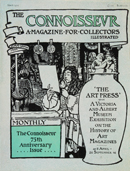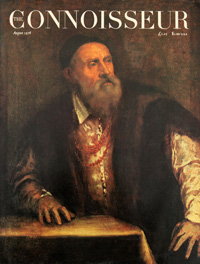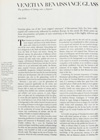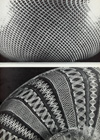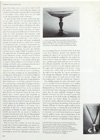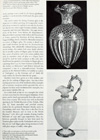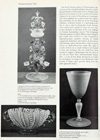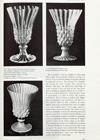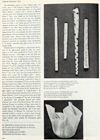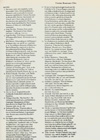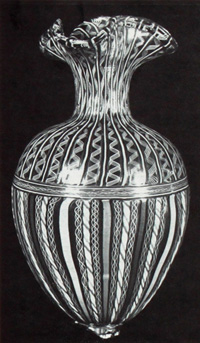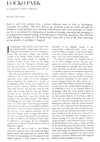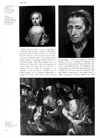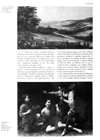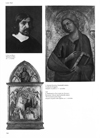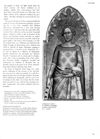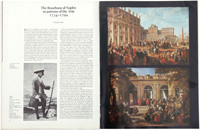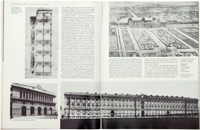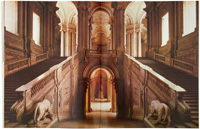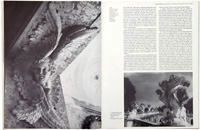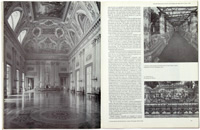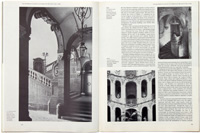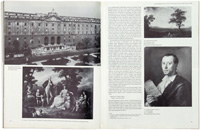< Back
to Documents
< Previous
Next >
THE CONNOISSEUR: An Illustrated Magazine For Collectors - Back Issues
Rare and Vintage Back Issues of THE CONNOISSEUR Magazine
The Connoisseur back issue 753 - Morgan & Sanders from Catherine Street
The Connoisseur back issue 774 - Titian Portraiture by Alistair Smith
The Connoisseur back issue 774 - Dating
Vetro a Filigrana
The Connoisseur back issue 772 - The Locko Park Drury-Lowe Family Collection
The Connoisseur back issue 780 - In the wake of Guglielmo della Porta
The Connoisseur back issue 780 - A Shoe Horn by Robert Mindum
The Connoisseur back issue 788 - The Bourbons of Naples as patrons of the Arts
The Connoisseur back issues 789,790 - The Chase in Art
Full List of The Connoisseur back issues
The CONNOISSEUR Magazine - The Art Press - Back Issues
THE CONNOISSEUR: AN ILLUSTRATED MAGAZINE FOR COLLECTORS, founded in 1901, was one of the finest magazines for art lovers and collectors of art and decorative arts ever published, containing an astonishing variety of collectibles, excellent professional articles and plenty of fantastic illustrations in monochrome and in color. Beyond the articles that it published, the magazine is also noteworthy for its stylish design. Turning over the pages gives us a glimpse of the inexhaustible riches to be found in auction houses, galleries and country houses in England, Europe and the USA at the 70s and 80s of the 20th century.
Here is a lovely citation from the excellent article How Economics Shaped Human Nature: A Theory of Evolution by Seth Roberts of the Department of Psychology, Tsinghua University, Beijing, China:
By connoisseur I mean "one who enjoys with discrimination and appreciation of subtleties <a connoisseur of fine wines>", as one dictionary puts it. In addition to wine connoisseurs, there are connoisseurs of tea, cheese, beer, coffee, chocolate, cigars, Scotch, and other consumables. Collectors are a type of connoisseur. Sometimes collector and connoisseur refer to the same people. An old magazine called The Connoisseur had the subtitle an illustrated magazine for collectors and said it "will include in its scope anything that any reasonable person collects, not only furniture, porcelain, pottery, prints, books, manuscripts, fiddles and old silver, but also coins, medals, autographs, posters and stamps".
Anything that any reasonable person collects ?
Well, The Connoisseur back issue No.753 of November 1974 for example, includes an excellent article on Morgan & Sanders and the Patent Furniture Makers of Catherine Street by Brian Austen:
Furniture historians have long recognized the Regency cabinet-makers and upholsterers Morgan & Sanders of Catherine Street, Strand as one of the leading London makers of this period. They were noted for the patent furniture which featured prominently in their advertisements. Most of the existing references to Morgan & Sanders are however based on a limited range of sources. The account of the firm's showroom in Catherine Street published in Ackermann's Repository in 1809 and a number of plates with descriptions indicating Morgan & Sanders as their source, included in the same publication, form the major source of information. This has been supplemented by detail from tradecards and directories. It is the intention of this article to try to probe further, though the business records of Morgan & Senders like those of most cabinet-makers, have failed to survive; the number of known commissions are few; and with certain exceptions the furniture produced appears not to have been marked.
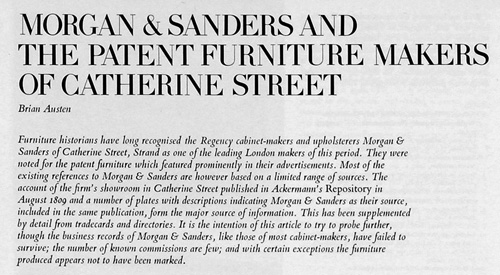
Morgan & Sanders - The CONNOISSEUR Art Magazine
![]()
1/12 - The first page of the article on Morgan & Sanders - The CONNOISSEUR back issue No.753
This quote, taken from the introduction to the article, best testifies on the serious intentions of the scholar writers of The Connoisseur "to try to probe further". Almost all of the magazine's articles are accompanied with high quality pictures - in the article on Morgan & Sanders, for example, you can find rare pictures of antique and quite sophisticated English furniture items which were offered by Morgan & Sanders and their rivals in Catherine Street, Thomas Butler. This is an interesting and juicy view on the lively furniture market in London at the beginning of the 19th century.
***
The CONNOISSEUR back issue 774 - Titian Portraiture by Alistair Smith
Front cover: Titian's Self-Portrait, 1550, canvas, 0.96 X 0.75 in. Dahlem Museum, Berlin - The CONNOISSEUR back issue No.774
The main article of the 774 issue of the CONNOISSEUR Art Magazine is dedicated to the Portraiture Art of the great Italian painter Tiziano Vecelli or Tiziano Vecellio (1490-1576) known in English as Titian. The article, written by the late curator and art historian Alistair Smith who was the Head of Education and a Deputy Keeper at the National Gallery in London, brings a fascinating analysis of the beautiful portrait paintings of Titian including the eternal self portrait presented on the front cover of the magazine. In addition, the 774 issue contains instructive articles such as 'Liverpool Engravers and their Sources' by Norman Stretton, 'Regency Scrolls' by John Gloag, 'Polidoro and English Design' by Timothy Clifford, 'Messer Marsilio and his Bride' by Mariette Van Hall, 'Dead Dogs and Englishmen' by N.B. Penny and 'Minton Maiolica' by Paul Attfrbury as well as many reviews on art exhibitions and art sales in Europe and in America.
Dating Vetro a Filigrana by Dr. Ada Polak
An interesting article written by Dr. Ada Polak and titled 'Venetian Renaissance Glass' aroused our curiosity. Ada Polak was at the time of publication a Deputy Curator in Britain, for The Arts and Crafts Museums of Norway and her many books include the renowned 'Glass: its Makers and its Public' published by Weidenfeld and Nicolson, 1975. Her detailed study of the filigree glass craftsmanship originated on the island of Murano in the 16th century is one of the important sources for coping with the problems of dating vetro a filigrana glass vessels. In the following we present a few excerpts from the article accompanied with some beautiful photos of the items mentioned in the article:
Venetian glass, one of the 'most original utterances' of Renaissance Italy, has been widely copied and continuously influential in northern Europe. In this article Dr. Polak points out those characteristics and points of style which help in the dating of this highly elaborate and inventive glassware. The Venetian art of glass is one of the great and most original utterances of the Italian Renaissance, and, within its own field, it also became one of the most widely influential. Glassmaking had been indigenous in the lands and islands of the lagoon from the birth of Venice and before. During the fifteenth century, the glassmakers of Murano (where Venetian glass had been made since the thirteenth century) not only made vases, goblets and ewers in elegant, well-balanced Renaissance shapes, many of which hark back to Classical times, but also, for reasons which we as yet understand only partly, the Renaissance inspired Venetian glassmakers to a series of wonderfully imaginative technical inventions, and it was these that became the bases for the most fascinating of the new developments. Like all revolutions in the decorative arts, that in the glassmaking world of Renaissance Venice had its roots in technical innovation.
Between c. 1450 and c. 1550 the glassmakers of Murano improved significantly on the clarity and purity of their colorless glass. At the same time they became able to make any number of colors and to combine them skillfully into calcedonio (marbled glass) and millejiori and mosaic patterns, to make filigree glass, iced glass and, by manipulation of the hot glass, to create fine and capricious detail, the like of which the world had never seen. If one looks for some kind of background to this sudden burst of inventiveness in the making of furnace-worked glass vessels, it is useful to remember that there was in Venice a long tradition for the production of tesserae for mosaics in many colors and combinations of colors, and for the making of beads in complex color-patterns.
Between c. 1470 and c. 1530, there was also a most interesting production of enameled glass vessels, with figures and ornaments in Renaissance styles, or with heraldic emblems. By c. 1530, the Venetians had transformed glass vessels from mainly utilitarian things for daily use, into precious, fashionable and expensive objects, very beautiful to look at and intriguingly cleverly made. The impact on the rest of Europe was enormous. From the early sixteenth century, Venetian glass was sought after by the rich and the powerful, its production was transplanted to other countries and it was copied and imitated all over northern Europe. Eventually its basic ideas were further developed in countries far away, particularly in Bohemia and in Britain, along new and original lines. Whatever one looks at in European, and for that matter in American glassmaking, Renaissance Venice can usually be seen somewhere in the background, as an admired model to be copied or emulated, as something stimulatingly competitive to be outdone, or as a tradition so ancient and firmly established, that only the historian is still conscious of its origins. The Venetians themselves have continued to build on their Renaissance inventions to this day.
Considering the immense importance of Venetian Renaissance glassmaking, and the considerable quantities of glass in Venetian Renaissance styles which still exist, it is amazing to realize that, apart from a few enameled pieces which can be dated, at least approximately, from their subject matter or from their heraldry, hardly any extant glasses can be attributed with any certainty to a definite date or place - for we can never be certain that a glass in Venetian Renaissance style was made in Murano and not elsewhere in Italy or in northern Europe. Catalogues of Venetian glass abound in vague datings to beginnings and ends of centuries, and when it comes to origin, the word 'probably' recurs with monotony. And what else can the poor cataloguer do, for he has hardly ever anything to go by except hunches and flairs for period style.
Let us take one group of Venetian Renaissance glass, those with inlaid patterns of white, or occasionally colored threads, and see what is known about them, consider what are our aids when trying to determine each piece and what are the pitfalls that threaten us. Here, as always when it comes to Venetian glass history, we must lean heavily on the researches of Luigi Zecchin, a son of Murano, with a first-hand knowledge of the present-day running of its glass industry, also an historical scholar of unfailing integrity. For twenty years or more he has hauled out of the archives of Venice and of Murano original and significant documentary material; this he has presented in bi-monthly articles, which throw ever new light on the old glassmaking world of Murano.(*1)
In 1968, Zecchin wrote an article, which at the time seemed rather abstruse.(*2) He demonstrated that the word latticino (latticinio), used by most scholars in recent years to describe glasses with filigree-like inlays of white threads was, when it can first be traced, in 1564, used to describe opaque white glass, not filigree glass. From usage in sixteenth-century Venetian documents he could demonstrate that criss-cross work with a tiny air-bubble at each crossing of the threads, then was called vetro a reticello (rete - net, reticello = little net) (Pic No. 1), and glass with more complicated patterns of twisted threads was called vetro a retortoli (= twisted nets) (Pic No. 2). Zecchin proposed that the whole group be described as filigree glass, as he could show that vetro a jiligrana was pure and authentic sixteenth century usage. Finally he pointed out that the expression vetro di trina (lace glass) was a creation of the nineteenth century. Zecchin traced it back to Nesbitt's book on the Slade collection of glass in the British Museum of 1871 - it was actually used as early as 1849 by Apsley Pellatt in his 'Curiosities of Glass- making', to describe what, according to Zecchin's new findings, should be called vetro a reticello.
In 1971 another article showed that this discussion of linguistic terms was more than an exercise in philology, that it had direct bearings on the understanding of existing glass.(*3) In the papers of the Podestd of Murano he discovered that the two brothers Filippo and Bernardino Catanei at the sign of the Sirena glasshouse (their family name was Serena), applied for a twenty- five years privilege to make glass according to the new technique they had just invented, 'a facete con retortoli a fil', and that the Council of Ten, on the 19 October 1527, granted them the sole rights to make this kind of glass, for ten, not twenty-five years. By 1540, vetro a reticello and a retortoli appear quite frequently in Venetian and Muranese documents, for tazze, ampoulle pifari, catelane and other shapes, and made by glassmakers other than the brothers Serena. In 1549 vetro a retortoli appears in the Mariegola, the guild document which guided the profession in all matters. On 7 September of that year, a decree imposed upon the glassmakers of Murano to make 'stems and feet of redesello and retortoli (Pic No. 3), instead of 'bubbles for roundels and other plain work'. In 1588 'Misser Liberal Testagrossa, patron de fornasa all'insegna della Testa d'Oro' is reproached because he makes feet and stems 'plain and not de redesello'.
Here we have firm evidence of when this major group within Venetian glassmaking was actually invented and of how, within a couple of decades, it had become part of the general repertoire in Murano. It is fascinating to see how the authorities seem actively to have encouraged this new invention which made glass vessels more elaborate, attractive and expensive. By granting sole rights to the inventors for ten years instead of the twenty-five applied for, they assured the brothers Serena a short run of their own with this product - perhaps to give them sufficient time to work out the technique completely - but after the ten years expired they were keen to see the technique taken up by the larger circle of glassmakers and become a commercial product, which could spread the fame and fill the coffers of the Republic. By 1549 the profession itself, through the Mariegola, actively encouraged the use of filigree inlays in at least part of vessels, while discouraging plain work like roundels for windows.
One existing example of a glass with retortoli work seems to antedate the Serena invention.(*4) It is a goblet of impressive dimensions in the National Museum of Budapest (Pic No. 4). The foot is broken and replaced by one in silver gilt with a long engraved inscription. This relates that the glass originally belonged to King Matthias Corvinus, that after his death it passed into the possession of the noble family of Batthyany and that the foot was broken during the sixteenth or seventeenth century. Matthias Corvinus died in 1490, thirty-seven years before the privilege of the Serenas in Murano. Whether the Corvinus goblet really precedes the Serena privilege, or whether the story on the foot should be reinterpreted, this author is not in a position to determine, as it would need detailed new research into the goblet's history and reconsideration of the inscription. It is however tempting to assume that it is a very early example of sixteenth-century Murano work, perhaps even a work by the Serena glasshouse, and that it was its novelty which made the glass such a sensation.
One useful source for dating Venetian glass is the depiction in realistic paintings of recognizable vessels. It has been extensively exploited, not only by Zecchin, but also by two other major Venetian scholars, Astone Gaparetto and Giovanni Mariacher. On page ninety-seven of his book 'Vetri Italiani del Rinascimento', Mariacher shows a picture in the Galleria dell' Accademia in Venice, painted by Bonifacio de'Pitati, showing a beggar holding a bowl, which Dr. Mariacher interprets as a piece of filigree glass. The picture is dated 1533 and would therefore just fit into the Zecchin-Serena chronology. But, admittedly without having seen the actual picture, this author feels some doubt whether this is actually a piece of filigree glass. It looks more like a piece of pottery, and it also seems unlikely that such an expensive piece of glass as a filigree bowl should be used for such a purpose at this early date. Paul Perrot has spotted a covered jar in filigree glass in a painting dated 1537 by Peter Gaertner in the Walters Art Gallery in Baltimore,(*5) and Robert Schmidt has interpreted a vase in a sixteenth-century Venetian portrait in the National Gallery in London as a piece of 'Fadenglass', as the Germans call it.(*6) Both fall easily within the Zecchin dates for the genre.
Picture 5. Ewer, foot and handle lost, made with a fine alternation of stripes made a retortoli and in pure milky white. The ewer must have been made in two halves, joined together horizontally - a real tour de force. Height: 34 cm. The Victoria and Albert Museum, London.
Zecchin's finds have given us a firm terminus ante quem for the making of filigree glass - but alas, it does not help us to date any of the hundreds of fine examples still in existence except on stylistic grounds. For vetro a jiligrana has been made in innumerable examples, in a great many varieties (Pic No. 5). Let us first look at one or two examples for which we have some basis for chronological definition. A few pieces can be dated approximately from the marks on their silver mounts. The lovely vase with its three-foil opening in the Toledo Museum of Art, Toledo, Ohio (Pic No. 6),(*7) bears enameled and jeweled mounts, marked by the goldsmith Heinrich Straub, active in Nuremburg 1608-1636. Then there is the Parr Pot in the London Museum and its twin in the British Museum,(*8) with silver gilt mounts, bearing London hallmarks of 1546 and 1549 respectively; they are, however, generally thought to have been made by Venetian glassmakers in the Netherlands and anyway, they are not 'real' filigree glass, being ornamented only with plain stripes of milky white glass.
One firmly dateable group of Venetian glass is the collection of two hundred and thirty-five pieces, which King Frederick IV of Denmark-Norway brought home from his visit to Venice in 1708-1709 and which is now displayed at the Castle of Rosenborg in Copenhagen. It has been published in its entirety and with impeccable scholarship by the Director of the Rosenborg collection, Gudmund Boesen. It is interesting to see that as early as 1960 he distinguishes clearly between vetri a reticella and a retortoli in exactly the same way as does Zecchin, on the basis of his own findings in Venetian documentary sources.(*9) The Rosenborg collection contains over thirty different types of filigree glass vessels. Some of them are easily recognized as eighteenth-century products, showing an almost exaggerated complexity and richness of decoration, others having a grace and prettiness, which seems to indicate an eighteenth-century origin. But quite a number of them are so simple, balanced and classical in form and execution, that one would have been tempted to suggest a Renaissance date for them, if one did not know their well-documented history (Pics Nos. 7, 8 and 9). Few things demonstrate so clearly the uncertainties of dating as these Renaissance style versions of filigree glass, patently dating from the early eighteenth century.
We do not know with any certainty to what extent filigree glass was produced by Italians working a la facon de Venise in northern Europe during the sixteenth to eighteenth centuries. The technique was undoubtedly among the more complex ones invented in Murano, and from our present-day knowledge of extant material, it does not seem to have been practiced in Innsbruck, England, France or in Sweden.(*10) But it was made in Bohemia,(*11) and in the great center of glassmaking a la facon de Venise, the southern Netherlands, there is reason to believe that filigree glass was produced quite extensively, for there is a rich material extant in these countries, of shapes slightly more heavy and fanciful than what we imagine to be real Venetian glass.(*12) Some shapes appear in identical form in several versions. We choose, as one example, the beaker on foot with a flared lip and spiral pattern on the foot, in complex retortoli technique and with a relief pattern, perhaps mould blown, or perhaps made by a pinching technique reminiscent of 'nipped diamond waies', in the lower ranges of the bowl. This is known in a number of versions (Pic Nos. 10a, b and c); Robert Charleston has listed no fewer than seven examples.(*13) A complex piece of glass like this must have been made according to fixed working sequences within the glassmakers' team, each man knowing exactly what to do at which stage.
An interesting pointer to how filigree glass was made, once it had become a matter of routine, is provided by a set of four canes (Pic No. 11 with inlaid white threads a retortoli and a reticella in different varieties, now in the Kunstgewerbemuseum der Stadt, Koln.(*14) They were found in the Bischofsgartens- trasse in 1894, and they provide the only tangible pieces of evidence of production of glass a la facon de Venise in Koln, a city whose ground has been more churned up than most. There is, however, documentary evidence to the effect that an Italian-style glasshouse was founded there in 1607, but by 1611 it had been burnt down. If we may associate the find in Bischofsgartenstrasse with this enterprise, the canes can be quite accurately dated. What is even more interesting is that they seem to show that canes of this kind could be produced separately by specialists, easily transported, to be finally embedded into glass vessels by men of simpler skills.With the fall of the Republic in 1798 and the dissolution of the glassmakers' guild in 1806, no vessels appear to have been produced in Venice, until the tentative revival c. 1830 began of the old skills and techniques. The first evidence we have of the production of filigree glass in nineteenth-century Murano dates from the 1830s, with Domenico Bussolin and later Pietro Bigaglia, of paperweight fame, as the pioneers.(*15) Soon the technique was taken up by glassmakers all over northern Europe: in 1839 Georges Bontemps made filigree glass at Choisy-Le-Roi near Paris,(*16) and in the same year the Josephinenhutte in Silesia won a prize for its filigree glass.(*17) Apsley Pellatt was clearly familiar with the technique, when in his 'Curiosities of Glass making', published in 1849, he gave meticulous descriptions of how several varieties of filigree glass were made.(*18) At the Great Exhibition in London in 1851, filigree glass, surely the products of Val-Saint-Lambert, was shown by the Brussels firm of glass dealers and decorators G. Cappellemans.(*19) In 1857 a French glassmaker introduced the technique to distant Finland, where it was practiced with great skill at the factory of Nuutajarvii(*20) by now it was clearly a glass makers' skill, generally known and widely practiced over most of northern Europe. But while in northern Europe the making of filigree glass must be considered as one expression of Historicism, which mostly was discarded towards the end of the nineteenth century, in Murano the technique has been practiced without a break to modem times though now, in the hands of the best glassmakers, in styles which nobody could mistake for Renaissance glass (Pic No. 12).
NOTES
(1) For many years, very regularly, in the bi-monthly Vetro e Silicati (published in Florence), and occasionally in Giomale Economico, (published in Venice). Recently in Rivista della Stazione Sperimentale del Vetro (f. 1971). Since 1964, articles by Zecchin have also appeared in The Journal of Class Studies (published by The Coming Museum of Glass, ny), with English summaries.
(2) Luigi Zecchin, 'Fortuna d'una parola sbagliata'. The Journal of Glass Studies (see note 1), 1968, pp. 110-113.
(3) Luigi Zecchin, 'Une fomace muranese all'insegna della Sirena'. Rivista (see note 1), no. 2, 1971.
(4) Bela Borsos, 'Glassmaking in old Hungary'. Budapest 1963, cat. and ill. no. 5 and text p. 20. According to the poem of thirty-two lines in Hungarian, engraved on the foot, the goblet passed from King Matthias Corvinus to King Louis n (d. 1526). In 1524, he gave it to his Grand Cupbearer Ferenc Batthydny (d. 1566). The foot was broken either during the ownership of his descendent Boldizsar (d. 1590) or Boldizsar's son Ferenc (d. 1625), and the present one in silver gilt substituted.
(5) Exhibition catalogue: 'Three great centuries of Venetian glass', 1958, at the Coming Museum of Glass, ny, with an introduction by Paul N. Perrot, fig. 2, p. 20.
(6) Robert Schmidt, 'Das Glas', 2 ed., Berlin 1922, p. 103. Schmidt says the picture (cat. no. 173) is painted by Jacopo da Ponte Bassano (1510-1592), but it is now listed as 'Venetian School, sixteenth century*. It shows a vase with a couple of leaves stuck into it, which may well be of filigree glass, but today the picture is too dark to establish this for certainty.
(7) Cat. no. 60.36. Acquired from the Goldsmith-Rothschild Collection in Frankfurt.
(8) Philippa Glanville, 'The Parr Pot'. The Archeological Journal 1970, and Exhibition Catalogue 'Masterpieces of Glass', (introduction by Hugh Tait), British Museum 1968, cat. no. 186.
(9) Gudmund Boesen, 'Venetian glass at Rosenborg Castle' (with text and catalogue also in Danish and Italian). Copenhagen 1960. Boesen uses a retorti for Zecchin's a retortoli.
(10) No filigree glass is illustrated in E. Egg: 'Die Glashiitten zu Hall und Innsbruck im Jahrhundert', Innsbruck 1962, in Thorpe: 'English Glass' 3 ed. 1949 or any other standard works on English glass, in H.Seitz: 'Svenska glas med graverad dekor', Stockholm 1936, or inj. Barrelet: 'La verrerie en France', Paris 1953. One piece of supposedly French filigree glass is illustrated in Exhibition Catalogue 'Depuis 3000 ans, du verre', which presents the collections of Le Musee du Verre de Charleroi. M. Raymond Chambon ascribes cat. no. 180, an ewer with blue and white patterns a retortoli to the Orleans glasshouse of Bernard Perrot '1662-1709), but without giving specific reasons for the attribution.
(11) In 1957 a Czech archeologist found near the Cathedral of St. Vitus in Prague a stemmed cup with a cylindrical bowl, of a shape used as reliquaries in Italy. On bowl and foot are stripes in milky white glass alternating with stripes a retortoli, and the bowl bears the enameled arms of a church dignitary, Georg Breitenberg, and the date 1595. Our colleagues in Czechoslovakia consider that the cup must be a product of Bohemia, in spite of its Venetian style, as the metal is too thick and impure and the workmanship not elegant enough to be a sixteenth-century Venetian glass. Karel Hettes, 'Venetian trends in Bohemian glassmaking in the sixteenth and seventeenth centuries'. The Journal of Glass Studies (see note 1), 1963.
(12) See illustrations in standard works on glass in the southern Netherlands, like R. Chambon: 'L'histoire de la verrerie en Belgique', Brussels 1955, Anne-Marie Berryer: 'La verrerie ancienne', Brussels 1957, and Exhibition catalogue 'Trois millenaires d'art verrier', Musle Curtius, Liege 1958.
(13). Robert Charleston: 'Glass in the Gambier-Parry collection'. Burlington Magazine, March 1967. The best pieces, like the one in the Gambier-Parry collection itself, may well have been made in Venice, but Mr. Charleston has collected very interesting evidence to indicate that other versions of the type have been produced in northern Europe.
(14) Catalogue 'Glas', Kunstgewerbemuseum der Stadt Koln 1963, no. 226, and Schmidt: 'Das Glas' (see note 6), pp. 129-130.
(15) Exhibition catalogue: 'Vetri di Murano 1860-1960', Verona 1960, with an introduction by Astone Gasparetto, cat. nos. 1 and 2 and text p. 11.
(16) Barrelet: 'La verrerie francaise', (see note 10), p. 131.
(17) Schmidt: 'Das Glas', (see note 6), p. 399.
(18) Apsley Pellatt's descriptions were not the first. In 1843, Franz Pohl made one in Berliner Gewerbe-, Industrie- und Handelsblatt, and Bontemps described the techniques in 1845. Schmidt: 'Das Glas*, (see note 6), p. 108.
(19) On the co-operation between Capellemans and the factory of Val-Saint-Lambert, see Joseph Philippe: 'Le Val-Saint-Lambert', Liege 1974, p. 73. Here filigree glass is known to have been made as early as 1847 (p. 105) and in the same year at the sister factory at Laeken (PI. 6c). At the Paris Exhibition in 1889 the factory at Chenee near Liege showed fine filigree glass (PI. 15), while the chief designer in modem times, Charles Graffart, experimented with filigree glass as late as the 1940s (p. 266).
(20) Vilho Annala: 'Notsjo Glasbruk 1793-1943' Helsinki 1943 and (in English) Ada Polak: 'Glass, its makers and its public', p. 180.
ADA POLAK
***
The CONNOISSEUR back issue 772 - The Locko Park Drury-Lowe Family Collection
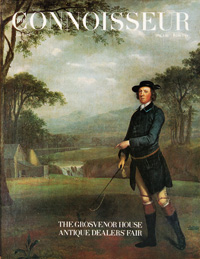
Locko Park - an important Family Collection by Richard Calvocoressi - The CONNOISSEUR Art Magazine
![]()
A very fine portrait of Richard Lowe in hunting clothes, set in a landscape background, by Arthur Devis - The CONNOISSEUR back issue No.772
I lately received an interesting email which directed my attention to the back
issue of The Connoisseur Vol 192 no 772 June 1976. The 772 issue is a quite
heavy publication with more than 450 pages including a full catalog of the Fine
Art & Antique Fair and Festival which took place in the National Hall in 1976 -
indeed a marvelous back issue and a treasure for professional antiques
collectors. But what really aroused my curiosity was a relatively short article
(pages 141-145) by
Richard Calvocoressi about The
Locko Park
art collection which describes one of the most important and beautiful private
paintings collections owned by the
Drury-Lowe family.
The art historian Richard Calvocoressi, was a curator at the Tate Gallery
(1979-87) and director of the Scottish National Gallery of Modern Art
(1987-2007), and became director of the Henry Moore Foundation in 2007.
Here are a few excerpts from the article. You are also invited to have a look at the beautiful b/w pictures of the paintings that accompanied the article:
Early in 1968 forty pictures from a private collection went on show at Nottingham University Art Gallery. The event did not go unnoticed in the art world, although the exhibition would probably have attracted more attention had it been presented in London too. For it symbolised the culmination of months of cleaning, restoration and rehanging, in an imaginatively recreated setting, of the paintings at Locko Park near Derby. The collection, which belongs to Captain P. J. B. Drury-Lowe, must rank as one of the most interesting private displays of paintings in England. It is surprising to find, scarcely a stone's throw from busy industrial Derby, a large country house set in rolling park and farmland; even more surprising to discover that this house contains some first-rate examples of the British, Dutch, Flemish and, most extensive of all, Italian schools of painting: in particular, a series of fine works by the Italian 'primitives'. Since the Nottingham exhibition eight years ago these pictures have rested on the walls of their rejuvenated home, benefiting from the care lavished upon them by their owner.
When Dr. Jean Paul Richter catalogued the Locko collection in 1901 he listed some two hundred and eighty-four works, nearly all of them paintings. (Recent scholarship has resulted in a number of re-attributions.) Most of these were bought by the present owner's ancestor, William Drury-Lowe (1803-1877), between 1840 and 1865, when he made various trips to Italy with his wife and children. Sometime in the mid-1850s he met Dr. Gustav Waagen who found him 'a great lover of art, and especially of the early Italian schools. The collector invited Waagen to visit Locko; his journey, he later wrote, was 'richly repaid'. From Waagen's inventory of the pictures at Locko it seems probable that William Drury-Lowe's taste for Trecento painting had not at that time led to any significant purchases. On the other hand Waagen noted, amongst other pictures, one of the two Gaspard Poussins still in the collection, the Dirck van Baburen The Mocking of Christ, which he attributed to Caravaggio, the two Ghirlandaio portraits now in America, and the Moroni Portrait of Bartolommeo Cappello. Between 1865 and his death in 1877 William Drury-Lowe made no more visits to Italy but busied himself instead with integrating his pictures fully with their new surroundings. For this purpose he had already employed a local architect to carry out alterations in the Italianate manner to his predominantly eighteenth-century house: these involved adding a campanile, a large formal dining room and a picture gallery. The last two are where many of the most prized paintings hang today.
The collector's grandson was responsible for the sale of twelve paintings between 1906 and 1916, against the wishes of his deceased grandfather. This was an unfortunate loss, although copies were made to replace them (they are still there on the walls), so that it is possible to appreciate the remarkable range of the original collection. Richter's catalogue, drawn up before the clandestine sale, gives detailed descriptions, and sometimes illustrations, of these pictures. The famous Castagno David with Sling, painted on a leather shield, which William Drury-Lowe bought in 1852 for 613 English pounds. (he, and later Richter, thought it was by Pollaiuolo) is now in the National Gallery in Washington. Other 'lost' works include a Head of a Youth (Duke Ercole of Ferrara) by Cosme Tura, in the Metropolitan Museum in New York, a Birth of Christ from the Studio of Botticelli, and a pair of portraits by Domenico Ghirlandaio (now part of the Huntington Collection) which the collector believed to be the work of Masaccio before Waagen put him right. From 1916 until 1960, when the present owner inherited Locko, the collection stayed intact. No more than a handful of works of note have departed from the house in the last fifteen years: amongst them, a delicate drawing of St. John the Baptist's Head by Andrea del Sarto, a work of extreme beauty, of which the British Museum owns a copy; a Virgin and Child by the fourteenth-century Florentine painter Niccolo di Tommaso; and Lorenzo Monaco's Madonna and Child, which hangs in the National Gallery of Scotland (it is now a worthy neighbour of the gallery's latest acquisition, Verocchio's Madonna and Child bought by Ruskin in Venice a hundred years ago).
What remains at Locko is an array of paintings of a uniformly high standard, a mixture of Old Masters and family portraits. Many of the latter date from before the collector's time. Even if they are not always of great art historical interest, they cannot but be valued dearly as a charming pictorial record of a Derbyshire family. Often these portraits are to be found on the walls of the older, more intimate and attractive part of the house. There is room here to mention only two, which are of interest to art historians: a very fine portrait of Richard Lowe in hunting clothes, set in a landscape background, by Arthur Devis (front cover) and an early work by Joseph Wright of Derby, his portrait of The Hon. Caroline Curzon as a Child (No. 1). (Richard Lowe died in 1785 and the estates of Denby and Locko went to his cousin William Drury of Nottingham, who subsequently took on the arms and surname of Lowe, Caroline Curzon was an aunt of the collector's wife. Mrs. William Drury-Lowe.) The British school is further represented by Pieter Tillemans (an early view of Chatsworth, before Capability Brown's alterations to the park and gardens), Ozias Humphry and two very competent followers of Stubbs, John Boultbee and John Femeley. In addition, there are a couple of small watercolours by De Loutherbourg and a magnificent Canaletto of the New Horse Guards Parade front St. James's Park.
Sixteenth-century Italian painting is much in evidence: a Christ Carrying the Cross by a follower of Bacchiacca, a psychologically penetrating Portrait of a Girl (probably a Medici) by Bronzino and Moroni's Portrait of Bartolommeo Cappello testify to William Drury-Lowe's interest in the High Renaissance. One of the most poignant images in the whole collection is that of the Head of an Old Woman, sketched in oil on parchment, attributed to Annibale Carracci (No. 2). Two Caravaggisti, one northern, the other a southern painter, make an interesting pair: a dramatic Mocking of Christ by Dirck van Baburen (No. 3) can be compared with a delightful scene entitled Children Playing with a Cat and a Mouse, attributed to Orazio Gentileschi and recently cleaned to reveal a striking colour contrast of green and rose (No. 5).
Of the Dutch and Flemish schools Joos de Momper's A Harvesting Scene demands attention (No. 4). It is by far the most beautiful landscape painting at Locko, with qualities of depth and light absent from the Flemish Landscape with Figures attributed to de Momper's slightly older contemporary, Paul Bril. Jan de Bray's powerful Portrait of a Man (No. 6) is further evidence of the collector's fondness for portraiture - although, curiously, he never sat for his own portrait.
The piece de resistance at Locko is unquestionably the group of Trecento and Quattrocento paintings; concerning this it has been remarked that William Drury-Lowe anticipated by a few years Thomas Gambier-Parry's incursions into the same field. (The Gambier-Parry collection can be seen at the Courtauld Institute Galleries.) Locko is rich in treasures of the Sienese and Florentine masters and they are ranked Victorian fashion four-deep on one of the walls of the picture gallery. The Sienese school includes a St. John the Evangelist (No. 7), a Madonna and Child from the Studio of Segna di Bonaventura and a Madonna and Child by Niccolo di Segna. Florentine painting is represented by a Coronation of the Virgin (No. 8), a St. John the Baptist by a follower of Ghirlandaio (possibly Bartolomeo di Giovanni) and Benozzo Gozzoli's Crucifixion with St. Jerome and St. Dominic. Lastly, there is the star painting of the whole collection, Bernardo Daddi's exquisitely beautiful and sophisticated St. Catherine of Alexandria (No. 9), probably related to the panel of St. Cecilia, formerly in the Jakob Hirsch Collection, New York.
The threat of dispersal which hangs over many private collections in this country at this uncertain time can never be ruled out entirely. It would be a tragedy if such were to be the fate of Locko: the house and its collection are inseparable; each in a sense owes its existence to the other. Let us hope that the owner can be persuaded to part with his best paintings once more - temporarily - for another exhibition, this time in London.
RICHARD CALVOCORESSI
***
The CONNOISSEUR back issue 780 - In the wake of Guglielmo della Porta
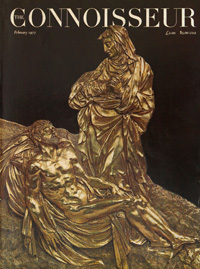
The Virgin Mourning the Dead Christ by goldsmith Cesare Targone - The CONNOISSEUR Art Magazine
![]()
The Virgin Mourning the Dead Christ by sculptor and goldsmith Cesare Targone 1575 - 1590. Finely chased repousse gold mounted on black marble, the relief 29 X 26 cm.; the marble 38.5 X 26.5 cm - Paul Getty Museum - The CONNOISSEUR back issue No.780
The beautiful copy of The CONNOISSEUR Volume 194 - Number 780 published in 1977 is dedicated to the talented Italian architect and sculptor Guglielmo della Porta (1500 -1577). In the preface to the excellent article "In the wake of Guglielmo della Porta" the author Ulrich Middledorf (1901 - 1983) wrote:
We are more amply informed about Guglielmo della Porta than about any other sculptor of his period; yet his image is anything but well defined. Both facts are interlinked. His rich and varied activity, carried on with the help of many assistants and followers or allied workshops is well documented. There is no lack of sculptures of all sorts that can be associated with him, and there is an unusual store of drawings. The wealth of information and the abundance of works are confusing, and need much study before they can be shaped into an articulated story... Porta as an individual cannot be understood unless the workings of the organization which had grown up around him are understood first. Many of his ideas are known only in the realizations of others; many of them survived him and led a lively existence for almost the next two generations. Since 'ye shall know them by their fruits' an investigation of some of these survivals may clarify his image, acquainting us at the same time with some artists who so far have remained in obscurity or present themselves to us as perplexing problems.
Cesare Targone whose magnificent piece of art is presented on the front cover of The CONNOISSEUR back issue No.780, is one of those obscure artists, an almost unknown name, a shadowy figure that has suddenly received a physiognomy when a signed work, a gold-relief of the dead Christ and the mourning Virgin which bears the inscription 'opus, caesaris. tar. veneti', of his appeared in a private collection. The technique and the composition recall the gold-reliefs from Guglielmo della Porta's workshop. Cesare Targone, is probably one of the artists who worked in the wake of Guglielmo della Porta. It is edident from the style of this work dates later than those of Guglielmo della Porta. The composition is looser; its symmetry is broken; the figures move more freely in space. The classical Roman design and modeling of the sixteenth century have given way to a livelier, almost pictorial treatment - beautiful.
Along with this fascinating 'detective' article by Ulrich Middledorf, The CONNOISSEUR back issue No.780 includes interesting coverage articles as detailed in the table of content of the magazine:
The Teaching of Primitive Art by J.B. Donnene
In the wake of Guglielmo della Porta by Ulrich Middeldorf
Reynolds' Portraits of the Stanley Family by David Mannings
Astley Hall's Shovelboard table by Cyndy Manton
Lazowski and Lowestoft Porcelain by Sheenah Smith
Tea Caskets and Containers by John Gloag
Remembrance of things past - Foujita's 'Journal' by Bernard Denvir
Guiseppe de Levis: bronze founder and sculptor by Charles Avery
The Furnishing of Holyrood house in 1668 by Margaret Swain
America by Joseph T. Butler
33 rd Annual National Antiques Show, Madison Square Garden
An interesting black and white photograph of an antique Shoe Horn published on page 143 of The Connoisseur back issue No 780 aroused our curiosity. I got to know about it from Wayne, an Australian chap who is running an exciting blog called The Reverend's Big Blog of Leather. The photograph in the Connoisseur back issue, presents a Shoe Horn made by Robert Mindum, a talented English craftsman who was active between 1593 and 1612 - you can find much more details in the fabulous catalogue of shoehorns made by Robert Mindum 1593-1613 available in Wayne's blog. We are content to show a piece of it here:

A Shoe Horn by Robert Mindum - The CONNOISSEUR Art Magazine
![]()
***
The CONNOISSEUR back issue 788 - The Bourbons of Naples as patrons of the Arts 1734 -1799
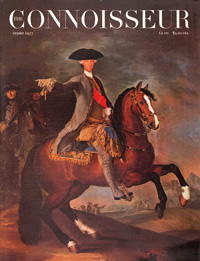
The Bourbons of Naples as patrons of the Arts by Harold Acton - The CONNOISSEUR Art Magazine
![]()
The painting on the front cover: Carlo di Borbone by Liani Francesco in Museo Capodimonte, Naples - The CONNOISSEUR back issue No.788
Recently I had an occasion to have a deep look at the back issue of The Connoisseur Vol 196 no 788 October 1977. The 788 publication brings a few interesting articles, most of which deal with the pearl of Italian culture - Naples: The Bourbons of Naples as patrons of the Arts, Sebastiano Conca at Holkham, Eighteenth-century Neapolitan influences on the Decorative Arts, The Laboratorio delle Pietre Dure in Naples, and Le Voyage Pittoresque de Naples et de Sicile. I invite you to read some excerpts from the article The Bourbons of Naples as Patrons of the Arts 1734 - 1799 by Harold Acton (1904-1994) a British writer, scholar and a great dilettante (a person who loves the fine arts):
Fertility, versatility, vivacity, speed - qualities that often seem forced or lacking in modem art - were almost excessive in Naples during the eighteenth century. Never were Neapolitan painters, sculptors and architects so prolific as during the reigns of Charles III (Carlo di Borbone) and of his son Ferdinand IV - until the revolution of 1799. There was abundant work for all, even the most mediocre, and the prevailing good taste could cover a multitude of sins. When he was approaching seventy the founding father of the Bourbons of Naples was depicted by Goya, an amazing creation for an official painter to a Court notorious for its formality. The elderly monarch stands with a slight stoop holding his gun like a pilgrim's staff, a sleeping hound at his feet, in a bleak hilly landscape. Under the large three-cornered hat his clean-shaven face looks affable and shrewd, lit by clever dark eyes and a nose of uncommon length. He had never been particular about his appearance: his coat is loose and bulging, and a small sword is attached to his belt as an after-thought. Not flattering certainly, but a bold incisive study - Goya at his best.
This was the greatest of the Spanish Bourbons and he could look back on an intensely varied and active life. Sometimes he complained that hunting bored him but it was an ingrained habit which he considered necessary to his health, an antidote to depression. The sport influenced his character, but it was as a fervent builder and patron of the Arts that he left his imprint on Naples and later on Spain. Charles was only eighteen when he came as a quiet conqueror to Naples in 1734. After two hundred and thirty-two years of misgovernment under viceroys as a province of Spain and latterly of Austria, Naples welcomed its promotion to the capital of an independent kingdom. A descendant of Louis XIV, Charles had inherited the Sun King's enthusiasm for magnificent construction, Naples already possessed a school of brilliantly original architects and there was no dearth of painters to collaborate with them. Now it gained a Maecenas to direct and encourage them. As if scenic beauty were not sufficient, Charles was determined to make his metropolis more splendid.
The seventeenth century has been considered the golden age of Neapolitan art but it was in the eighteenth century that the seed so prodigally scattered by Luca Giordano bore its most exuberant blossoms. Since 'Luke the Rapid's' death in 1705 his mantle had fallen on Francesco Solimena, still energetic when Charles came to the throne. One of the most inventive Neapolitan architects, Ferdinando Sanfelice, was Solimena's prize pupil and 'arbiter of his wishes'; another pupil, Francesco de Mura (nicknamed Franceschiello as Giambattista Caracciolo was Battistello and Solimena l'Abate Ciccio) secured lucrative commissions abroad. Some of de Mura's liveliest murals (no pun intended) depicting the Olympic Games and the Feats of Achilles, are in the royal palace at Turin, but at Naples he is ubiquitous. Other prominent disciples of Solimena, Sebastiano Conca and Giuseppe Bonito (Peppariello di Castellammare) were also at the young King's disposal to redecorate the old royal palace and the residences he proceeded to build. The old royal palace (begun by Domenico Fontana in 1602) had been so depleted by the Austrian viceroys that furniture had to be borrowed for it until the Farnese collection Charles had inherited through his mother arrived from Parma and Piacenza. In the meantime a legion of artists was engaged to fill the breach. As Solimena (1657-1747) painted indomitably till the age of ninety his prestige was paramount. His easel-pictures circulated all over Europe and even such Venetians as Pittoni and Piazzetta were influenced by his style. In spite of tempting invitations he refused to leave Naples. According to Edward Wright in 1721, he was 'esteem'd the compleatest master in Italy... We went to pay a visit to this excellent master, and found him very civil and obliging: notwithstanding some reports we had heard of him to the contrary. He dresses as an ecclesiastick, which is very frequent there with those that are not in orders. Besides other smaller pieces of his work he showed us a large one he was doing for Prince Eugene, the story of Cephalus and Aurora, extremely beautiful. As I remember, 'tis that part of the story where Aurora is taking up Cephalus into Heaven, which she is said to have done, when all the means she had used to induce him to a breach of his conjugal vow to Procris had proved ineffectual'.
Writing in November 1739, the more sophisticated President de Brosses was as contemptuous of Solimena as of Neapolitan architecture and perpetrated a gross pun about the domes of churches, 'oblong and ill-shaped without lanterns above them, in a word real Sodoms (sots domes)... Frankly, the houses without roofs do not appeal to me: it always looks as if their heads had been chopped off... I can only tolerate those which are crowned with balustrades'. But he considered the Via Toledo, named after the vigorous viceroy Don Pedro de Toledo (1532-1553), 'the longest and finest street of any city in Europe', and he admired the royal palace with its sumptuous new furniture, observing that there was no bed in the King's apartment, 'so punctual is he about sleeping in the Queen's'. Altogether he concluded that Naples was the only Italian city which felt like a capital. For the further decoration of his palaces Charles founded a tapestry factory in 1737, a mosaic factory in 1738, and the porcelain factory of Capodimonte in 1739. To train artists in general an Academy of Design, eventually of Fine Arts, was founded in 1752, contemporary with similar institutions in Parma and Madrid. The tapestry factory benefited by the closure of the Medicean factory in Florence whose craftsmen, led by Domenico del Rosso, were invited to Naples. Their first product, a realistic portrait of the King, was dated 1741. A set of 'Elements' based on Florentine examples was woven between 1746 and 1763, but progress was slow and other tapestry weavers were summoned, Michelangelo Cavanna from Milan and Pietro Duranti from Rome, the former responsible for those exact copies of Guercino and Guido Reni at Capodimonte, the latter for a series of illustrations from Don Quixote, some of which were designed by Bonito, similar to Gobelins tapestry. Duranti's sons collaborated with him and managed the factory till it was suppressed in 1799. The finest of the Don Quixote series are now in the Quirinal in Rome; the rest are at Capodimonte. Owing to the discoveries at Herculaneum the King's taste was to develop in a Neo-classical direction. Perhaps the florid fantasies of Neapolitan Baroque had begun to seem provincial or old-fashioned, for its protagonists were getting on in years. At first it was for a hunting-lodge that he chose the wild park on the hill of Capodimonte: instead he decided to build a palace for the Farnese collection, something simple, solid and practical, but the architects he commissioned were unequal to such a task. The Sicilian Giovanni Antonio Medrano was a colonel of engineers as well as an architect, far inferior to such Neapolitans as Sanfelice and Domenico Antonio Vaccaro, but he was evidently serviceable at Court, for he was also employed at Portici, though in both cases the quarrelsome Roman Antonio Canevari was called to co-operate, with the enterprising but unscrupulous Angelo Carasale as contractor. In spite of the King's eagerness so many obstacles delayed the building of Capodimonte that it was only half ready for the pictures from Parma in February 1758, twenty years after its first plan had been approved. The palace could only be approached by precipitous paths; its foundations required constant fortifying; and there was a scarcity of water. Certain privileged travellers were allowed to visit the new gallery, including Winckelmann, who spent several days of study there, and Fragonard, who copied some of the pictures. As late as in 1787 Goethe noted that the collection was 'not well arranged, but the objects themselves are beyond praise...'.
The north side of the palace remained unfinished under Charles' successor but in the meantime the park was semidomesticated with radiating avenues and Sanfelice was commissioned to build the porcelain factory inside it. Ferdinando Fuga added four rooms, two galleries, and ornamental statues to the entrance between 1763 and 1766. Albeit no masterpiece, the rectangular russet building with its pilasters, capitals, and globes of grey lava (piperno) crowning the attic, blends agreeably with its romantic surroundings, and the view from Vesuvius to the Vomero. Outside Naples it owed its renown to the porcelain factory, whose conception was probably inspired by Charles' Saxon Queen. In compensation for the delays over Capodimonte, the theatre of San Carlo was built with record speed between March and October 1737. It contains six tiers of thirty-two boxes and a spacious royal box in the centre where Charles could doze when the opera bored him, as it usually did. For so grand an opera house the King's indifference to music was ironical. It sufficed him to realise that his people were musical, and in a sense the San Carlo is his most popular memorial. There were three conservatoires in Naples as in Venice, founded for charitable purposes: those of Venice were for girls while those at Naples were for boys - music schools where talented pupils received special advantages. At the same period and even later 'Pergolesi, Jommelli, Piccinni, Sacchini, and an immense number of great singers, diffused the fame of the Neapolitans all over Europe'.(1).
Though the King continued to shoot at Capodimonte his interest in the palace waned: for his next residence he turned to remoter Portici, south-east of Naples near Resina, which combined the amenities of fishing with hunting. Since it was ominously near Vesuvius which erupted in 1737, a committee of experts produced a report on its safety, and the King's comment is often quoted that God, the Immaculate Mary and Saint Januarius would protect it, as in fact they did. So, in spite of the recent eruption, the royal villa of Portici was begun in 1738, the year of the King's marriage to Maria Amalia of Saxony, still under the age of fifteen. A salient attraction of Portici was its vicinity to Herculaneum. Previously Charles had bought the country house of Prince d'Elbeuf, the Lorrainer in Austrian service who had caused the preliminary excavations. These were now resumed with more intensity than skill. Charles often visited the underground city and on one occasion a cameo was found which he wore in a ring until he left for Spain, when he declared it belonged to Naples. The royal villa's peculiarity was that the old highway to Calabria passed through its centre. Two bridges connected the main residence with stables large enough for a squadron of cavalry and the gardens facing Vesuvius. On the other side broad balustraded terraces sloped towards the sea, and indeed this is the most handsome part of the building.
The objects from Herculaneum were arranged inside the palace and were seldom shown to strangers. Sketching or note-taking was forbidden, yet the fame of the artefacts spread far and wide and they excited curiosity all the more on account of the mystery enveloping them. After the bungled attempt of the pedantic Monsignor Bajardi to catalogue the antiquities, a Herculanean Academy was founded in December 1758 under the auspices of Bernardo Tanucci. Though its members were at sixes and sevens a luxurious volume was published privately for the King. Motifs from the illustrations were adapted in the new porcelain factory and they helped to propagate a vogue for Neo-classicism. By contrast with the statues, busts and mosaics from Herculaneum, a Rococo porcelain boudoir was installed in 1757 which, as Mr. Hugh Honour has justly observed in his delectable opus on chinoiserie, is 'the most elaborate example of Italian chinoiserie decoration', a masterpiece of grace and virtuosity. Its walls are lined with three thousand pieces of porcelain between vertical mirrors and twirling ribbons with nosegays, shepherd's crooks and musical instruments. The bright birds and butterflies on the stucco ceiling; the porcelain chandelier suspended by a monkey, sustain the fantasy with exquisite brio. This room is now at Capodimonte where it was invented and the royal villa of Portici is occupied by an Agrarian Institute, with few of its original decorations remaining (frescoes by Bonito, Cresescenzo Gamba, and a trompe I'oeil by Vincenzo Re over the staircase). The good King was much blamed for dismantling his porcelain factory and removing its artists when he succeeded to the Spanish throne in 1759 but eventually his heir revived it in 1771.
Work on the building of Portici went on while the King and Queen were in residence, and, as at Capodimonte, there was friction between Medrano and Canevari, who was responsible for the plan. The gardens were laid out with fountains, fish ponds and pavilions, and skilled botanists were imported from Genoa to cultivate tulips and other exotic flowers. Until 1752, the eighteenth year of Charles' reign, he preferred Portici to his other resorts, but in that year he switched his attention to Caserta, some twenty miles north of Naples, where he had often hunted. The two leading Neapolitan architects, Sanfelice and Vaccaro, so similar in taste and temperament, died in 1750. (No staircases have surpassed Sanfelice's in monumental grandeur, and the maiolica cloister garden of Santa Chiara designed by Vaccaro is unique.) Though their disciples continued languidly to emulate them this might be called the end of the purely Neapolitan epoch in architecture and painting. The following year Luigi Vanvitelli and Ferdinando Fuga were invited from Rome, where both had established high reputations. Belatedly Charles had found his ideal interpreters in stone and marble. The largest and most ambitious of his palaces were the last he commissioned before his departure for Spain: Caserta and the Albergo dei Poveri.
Caserta has been automatically compared with Versailles, and though it has fallen on evil days it remains majestic, solemn, austere, without pomposity - an extraordinary creation by any standards, eight hundred feet long, one hundred and twenty feet high, with four huge open courts and five floors. The foundation stone was ceremoniously laid on 20 January 1752, the King's birthday, but the building was unfinished when he left in 1759. After a period of stagnation Ferdinand IV continued it, as did Vanvitelli's son Carlo after his death in 1771. Because convicts and even slaves were employed on its construction it has been dubbed 'heartless' but, viewed objectively, is the result more heartless than our modern skyscrapers or palaces of cement? The multifarious marbles it is made of are all indigenous to the Two Sicilies; the octagonal vestibule and myriad porticos; the twenty-feet breadth of the Trapani marble staircases - so many geometrical surprises - richly compensate for the monotony of the rectangular facade, and the vistas of gardens leading through a mile of canals and fountains to the grand cascade on the hill, with Diana and her nymphs on one side, Actaeon turned into a stag attacked by ferocious hounds on the other - the culmination of the glistening groups of statuary, together achieve the effect of immensity desired by the King. Exuberance is sacrificed to regal dignity. Baroque in general conception but, as Sir Anthony Blunt observed: 'the treatment of the decoration is tinged with the severity of the classical revival'.(2)
The son of Gaspar van Wittel, a Dutch topographical painter who had settled in Rome and married a Roman, Luigi Vanvitelli was born in Naples and brought up in Rome, where he had numerous commissions for buildings mainly ecclesiastical. He was already fifty when Charles commissioned the palace which was intended to contain a university, a public library, a theatre, a seminary and a church, in addition to the royal apartments. Eventually it contained twelve hundred rooms. Besides Caserta, Vanvitelli was engaged on various mansions and public works in and around Naples, of which the forty kilometre Maddaloni aqueduct to bring water to Caserta is the most imposing; and the Doric hemicycle of the Foro Carolino (now Piazza Dante) which despite its elegance falls short of Vanvitelli's original design. The latter was to celebrate the virtues of Charles III, symbolised by the twenty-six figures on the balustrade. A niche in the centre was to contain an equestrian statue of the monarch: a plaster model was set up in 1765 but it was destroyed by the Jacobins in 1799. The private palaces he designed were enlargements of previous buildings, more Roman than Neapolitan in style. The plans of his contemporary Ferdinando Fuga are even more austere. His Albergo dei Poveri, begun in 1751, is chiefly remarkable for its vast extent - a sprawling rectangle over a thousand feet long. With the most charitable intentions Charles required a building capable of accommodating all the poor in his kingdom, conservatively calculated at eight thousand souls. Gigantic though it became, only a fifth of Fuga's original plan materialised. He was also commissioned to build a colossal granary (granili) to contain arsenals and cordage factories as well as stores for grain, but it was so badly damaged during the 1939 war that it was demolished. According to Signor Roberto Pane: 'it might be considered a pioneer of the modem silo'.3 Fuga being a Florentine, its Tuscan functionalism was greatly admired, no doubt as a change from the Neapolitan fantasy we find so refreshing. Gone is also the chinoiserie guest-house which stood near it with pagoda roofs and oval windows.
The King's building operations were contagious: he was imitated by his courtiers and the provincial nobles who were drawn to the capital. The Vesuvian coast was dotted with decorative country houses and formal gardens. These are nearly all in a state of lamentable decay, but what remains is poetically suggestive. Signor Roberto Pane's book on Vesuvian villas of the eighteenth century (1959) reproduces nostalgic examples of these architectural ghosts. Since the advent of Charles society became more cosmopolitan, and it was influenced by the ideas of the French encyclopaedists under his successor. While this had social advantages it proved detrimental to the Arts, especially to painting. During the second half of the eighteenth century foreign artists flocked to the land of their dreams in search of inspiration. German and Swiss painters formed the majority: Anton Raphael Mengs, for whom Charles had an unaccountable preference, and the cohort favoured by the Austrian Queen Maria Carolina: the Hackert brothers. Tischbein, Fuger, Kniep, and Angelica Kauffmann, whom even Reynolds adored. Wilhelm Tischbein and Christopher Kniep came to Naples when its art was still dominated by Solimena, and Tischbein was appointed to direct the Academy of Design, where he expounded the maxims of Winckelmann, based on the study of the human body and Greek sculptural forms, correct modelling and restrained colour, methodical and carefully pondered, in lieu of the theatrical effects and Solimenesque mannerisms students had been accustomed to under Bonito's casual tuition. Such teaching helped to smother whatever originality a student possessed..
The more I become acquainted with Tischbein's talents, as well as his principles and views of art, the higher I appreciate and value them', wrote Goethe, whose unfinished portrait by him prompted Max Beerbohm's delightful essay 'Quia Imperfectum'. Though the choice of a foreigner to direct their academy of painting was offensive to his Neapolitan colleagues they were won over by his Teutonic earnestness. His mentality was that of an archaeologist; he introduced system and perhaps a little discipline into the classes, distinguishing between courses of pure and applied art; and he was responsible for moving the academy to the recently restored Palazzo degli Studii (formerly a barracks and later a university, now the Museo Nazionale) where the masterpieces of Classical antiquity were exhibited after nearly half a century's seclusion. While Tischbein became director of the academy his compatriot Philipp Hackert was the Court painter who enjoyed the special favour of Ferdinand IV and Maria Carolina. Goethe described him as 'a very precise and prudent personage who, with untiring industry, manages, nevertheless, to enjoy life'. His topographical views are precise and prudent but they convey little joie de vivre. His cold, prosaic accuracy fascinated Ferdinand who showered him with commissions and sought his advice on all sorts of matters. His brother George assisted him, and Caserta is full of his painstaking panoramas. He had 'highly agreeable apartments' in Palazzo Cellamare as well as at Caserta where Goethe visited him, sharing the King's naive admiration. 'When he paints', the poet wrote, 'he has three colours always ready; and as he works on and uses one after another, a picture is produced, one knows not how or whence. I wish the execution were as easy as it looks'. For better, for worse, the Hackerts were forerunners of the Neapolitan vedutisti whose views were to become so popular in the nineteenth century.
The descendants of Solimena went back to the manger, as it were: the presepe, or Christmas crib, was their last aesthetic outlet. The figures in these representations of the Nativity, often modelled by well known sculptors, were dressed in Neapolitan costumes, and the whole scene was crammed with realistic details and inventions, from the delicately chased gifts of the Magi in gold and silver to the sausages hanging over the door of the inn. King Charles himself helped to arrange them, cutting up cork for a cottage, baking little tiles, and distributing the pastori (a generic term for the various participants as well as shepherds) in appropriate attitudes, and the Queen sewed costumes for them. This became a seasonal hobby of the Royal family. The King led the example and all his subjects who could afford it competed with churches and convents in producing their own presepe. The custom spread and became a cherished tradition, enlivened by native ingenuity and fancy. Some sculptors specialised in heads, hands and feet, others in animals, fruit and vegetables. Art was wedded to folk-lore, as in the genre paintings of Bonito and Traversi. These are some of the most vivid documents of Neapolitan taste in the eighteenth century. Groups and episodes became as elaborate as a scene by Zeffirelli. The Nativity became a pretext for the celebration of fertility and abundance, with gradations from the sublime to the ridiculous. At first we may be overwhelmed by this cornucopia, so true to the essence of Neapolitan art. The presepe was untouched by Neo-classicism. Here the eighteenth century lingered and we may sniff its earthy odours. Sir Sacheverell Sitwell wrote that the best painters of the eighteenth century in Naples were to be seen in their most typical moods on the ceiling of Santa Chiara, whose destruction in August 1943 is lamented in the haunting song:
Munasterio 'e Santa Chiara... tengo 'o core scuro scuro...
Beneath Sebastiano Conca's fresco of David dancing and playing the harp in front of the sacred ark and the lateral frescoes by de Mura and Bonito, the Bourbon Kings of Naples were buried side by side in copper chests, except the first, Charles, later King of Spain, and the last, Francesco II, who died in exile. If the Arts, apart from crafts, have flourished there since, please let me know.
HAROLD ACTON
NOTES
(1) Vemon Lee. 'Studies of the Eighteenth Century in Italy'. London. 1881.
(2) Sir Anthony Blunt. 'Neapolitan Baroque and Rococo Architecture', London. 1975.
(3) Roberto Pane. 'Ferdinando Fuga'. Naples. 1956.
***
The CONNOISSEUR back issues 789,790 - The Chase in Art
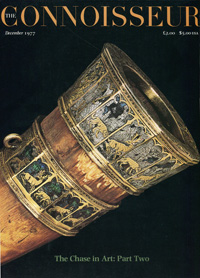
The Chase in Art - The CONNOISSEUR Art Magazine
![]()
The Savernake Horn, ivory, mounted in silver-gilt and enameled - probably Italian, eleventh century, mounts fourteen century - The British Museum, London - The CONNOISSEUR back issue No.790
I have always had great fun looking at the beautiful pair of copies of The CONNOISSEUR back issues dedicated to The Chase in Art (Volume 196 - Numbers 789 & 790) published in 1977. This is a prime example how the editorial staff of this leading art magazine headed by editor William Allan had the inspiration and qualifications for bringing up a broad subject which has its roots in the beginning of civilization and the history of art: Hunting and Hunters - they do it in a grand manner. Both the November and December issues of The Connoisseur discuss The Chase as a theme in the Arts with articles on Greek pottery, illuminated manuscripts, tapestries from the Netherlands, France and Germany, aspects of primitive art, furniture in horn and antler, hunting weapons and sporting guns from Royal collections in Europe, decoration on silver and porcelain. Court painting from the Renaissance to the nineteenth century and Islamic miniatures. I also recommend the articles on the Victorian cult of sport in the Scottish Highlands, and on the development and iconography of English sporting prints and paintings.
Part Two of "The Chase in Art", for example, includes interesting coverage articles such as:
The Devonshire Hunts: Art & Sport in the 15th century
Painting and Tapestries of The Hunt in Swedish Royal Collections
Silver and the Chase: Guns, Rifles, Horses and Dogs
The Art of the Early Hunters down to historical times
The Royal Collection of Firearms
The Englishman's Art: Sport and the country side in English Painting 1650-1850
Scenes of the hunt on French Porcelain
The Chase in Islamic Miniatures
Animals in Art
It is needless to say that all articles in The CONNOISSEUR are accompanied with numerous high quality reproductions, illustrations and a photographs printed on a first rate paper. Once you have made your selection from this list of back issues of the THE CONNOISSEUR periodical, which includes special copies for dedicated subjects such as the Victorian furniture, China porcelain and the history of the Antique fair, contact me and I will send you further information including full description of the content of the copy, price and estimated shipping cost.
Vol. 184 No.741 November 1973
Vol. 184 No.742 December 1973
Vol. 185 No.743 January 1974
Vol. 185 No.744 February 1974
Vol. 185 No.745 March 1974
Vol. 185 No.746 April 1974
Vol. 186 No.747 May 1974
Vol. 186 No.748 June 1974
Vol. 187 No.749 July 1974
Vol. 187 No.750 August 1974
Vol. 187 No.751 September 1974
Vol. 187 No.752 October 1974
Vol. 187 No.753 November 1974
Vol. 187 No.754 December 1974
Vol. 188 No.755 January 1975
Vol. 188 No.756 February 1975
Vol. 188 No.758 April 1975
Vol. 189 No.759 May 1975
Vol. 189 No.760 June 1975
Vol. 189 No.761 July 1975
Vol. 189 No.762 August 1975
Vol. 190 No.763 September 1975
Vol. 190 No.764 October 1975
Vol. 190 No. 765 November 1975
Vol. 190 No. 766 December 1975
Vol. 191 No. 768 February 1976
Vol. 191 No.769 March 1976
Vol. 191 No.770 April 1976
Vol. 191 No.771 May 1976
Vol. 191 No.772 June 1976
Vol. 190 No.773 November 1975
Vol. 192 No.774 August 1976
Vol. 193 No.775 September 1976
Vol. 193 No.776 October 1976
Vol. 193 No.778 December 1976
Vol. 193 No.777 November 1976
Vol. 194 No.779 January 1977
Vol. 194 No.780 February 1977
Vol. 194 No.782 April 1977
Vol. 195 No.783 May 1977
Vol. 195 No.784 June 1977
Vol. 195 No.785 July 1977
Vol. 196 No.788 October 1977
Vol. 196 No.789 November 1977
Vol. 196 No.790 December 1977
Vol. 197 No.791 January 1978
Vol. 197 No.792 February 1978
Vol. 197 No.793 March 1978
Vol. 197 No.794 April 1978
Vol. 198 No.795 May 1978
Vol. 198 No.796 June 1978
Vol. 198 No.797 July 1978
Vol. 198 No.798 August 1978
Vol. 198 No.799 September 1978
We have many other interesting back issues of other art magazines which will be added frequently, so please keep checking. If you have something particular in mind that you are interested in, you are invited to write to me and describe the copy of your interest and I will check and send you an answer if something which matches your interests appears in my lists. Most of the back issues are in a very good condition.
אסופת חוברות עבר של המגזין THE CONNOISSEUR למכירה לאספנים - תרבות אספנות במיטבה!
אניני טעם - Connoisseurs - מעריכים ניואנסים עדינים שנראים זניחים לחלוטין לאלו שאינם אניני טעם. ההערכה של אניני הטעם לניואנסים עדינים מתבטאת בנכונותם לשלם סכומים לא זניחים עבור פריטי אספנות כמו שטיחים עתיקים מן המזרח, פורצלן מעודן, יינות טובים וכל דבר אחר שהם מוקירים. בעשותם כך, מעודדים אניני הטעם את האמנים והאומנים המוכשרים להמשיך ולהשביח את כשרונותיהם ולהיעשות עוד יותר מוכשרים. רוצים להבין איך זה עובד? העיפו מבט בגיליונות של THE CONNOISSEUR הירחון האנגלי לאספנים אמיתיים שהיה בבעלות איל העיתונות האמריקאי רנדולף הרסט William Randolph Hearst ותיעד בדייקנות ובצבעוניות את פריטי האספנות הנהדרים שניתן היה לראות בבתי המכירות ובגלריות הטובות בעולם רגע לפני שהאינטרנט הגיע.
אם ברצונכם בחוברות מרשימה זו, התקשרו ואשלח תיאור מפורט, מחיר,
אמצעי תשלום ואפשרויות משלוח.לנוחיותכם
קובץ pdf הכולל את
רשימת עותקי המגזין THE CONNOISSEUR שבאסופה - אשמח גם לספק מידע נוסף בקשר
לתוכנה של כל חוברת לפי
בקשתכם.
Soft cover: Various THE CONNOISSEUR back issues
Publisher:
National Magazine Company Limited, England
Language: English
PDF Printer Ready: List of THE CONNOISSEUR Magazine Back Issues
Price: Call
References:
Rare and Vintage Back Issues of COUNTRY LIFE Magazine
Rare and Vintage Back Issues of the Du Magazine
Rare and Vintage Back Issues of the Weltkunst Magazine
Apollo, Il Cigno - Collections of Rare and Vintage Back Issues
© Dan Levy - Art Pane Home of Collectible Magazines
